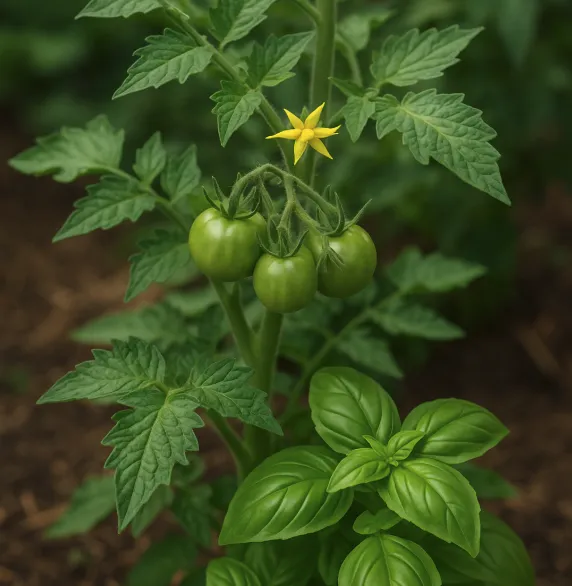
Natural Pest Control with Companion Planting
Protect your garden naturally! Discover how companion planting repels pests, attracts beneficial insects, and supports a healthy, thriving garden—no chemicals required.
Bug problems? Put down the spray. Here’s how companion planting uses plants—not poisons—to protect your garden naturally.
What Is Companion Planting?
It’s nature’s buddy system. Companion planting pairs up plants that help each other thrive—especially by repelling pests, attracting beneficial insects, and boosting growth. It’s not just smart, it’s sustainable—and it works with nature, not against it.
MVP Combos That Defend and Deliver
• Tomatoes + Basil
Not just a culinary dream team—basil helps repel thrips and tomato hornworms.
• Carrots + Onions
Each repels the pests that typically target the other. Now that’s root-level teamwork.
• Cabbage + Nasturtiums
Nasturtiums act like plant bodyguards, luring aphids and cabbage worms away from your brassicas.
• The Three Sisters: Corn + Beans + Squash
Beans fix nitrogen, corn offers structure, and squash shades out weeds. Add pest disruption to the list—this ancient method is the GOAT of companion planting.
At Clemson Tea Farm, we interplant basil around tomatoes in our garden. The basil perfumes the summer air and keeps the hornworms guessing. Marigolds, tucked like little suns at the borders, add one more fragrant layer of defense. In the tea rows, we have fennel.
Why It Works
• Disorients pests
The diversity of scents and shapes keeps pests from settling in.
• Attracts beneficial insects
Ladybugs, lacewings, and parasitic wasps? These VIPs need nectar-rich flowers like yarrow, calendula, and cosmos to hang around.
• Reduces the need for interventions
Fewer chemicals, fewer problems.
• Supports soil health and garden diversity
More plant types = more beneficial root interactions = better soil. Period.
Pro Tip: Mix It Up Monoculture is a buffet for bugs. Companion planting adds variety and confusion—a natural pest control strategy that smells like success (and marigolds).
Expand with a Permaculture Twist
Want to take it further? Build a garden guild. As Kath Irvine writes, a guild is a team of plants that protect, support, and nourish each other—from above the ground to below the surface.
Start with a food plant and surround it with:
A nitrogen fixer (like clover or beans)
A pest repellent (rosemary, marigold, wormwood)
A taproot (parsley, dandelion, carrot)
A beneficial insect magnet (yarrow, borage, lavender)
A groundcover (thyme, oregano, nasturtium)
Pro Tip:
Start small. Let your guild evolve. At Clemson Tea Farm, our tea plant guilds include dynamic herbs like comfrey, low-spreading oregano, and towering fennel—each playing a role in the pest-prevention orchestra.
Final Tip: Mix It Up
Monoculture is basically an open buffet for bugs. But diversity? That’s confusion. And confusion means fewer pests, happier pollinators, and fewer sad leaves eaten overnight.
Want to bring more farm-to-cup wellness into your life?
Join our newsletter for seasonal tea tips, health-forward recipes, and behind-the-scenes farm stories.
Or get on the waiting list for our small-batch tea harvest at Clemson Tea Farm—where every leaf tells a story.
Wanna Read More?
3 Key Permaculture Ethics for Beginners: Grow with Purpose
Zone 8a Spring Planting Guide
© 2025 Clemson Tea Farm. All rights reserved.
